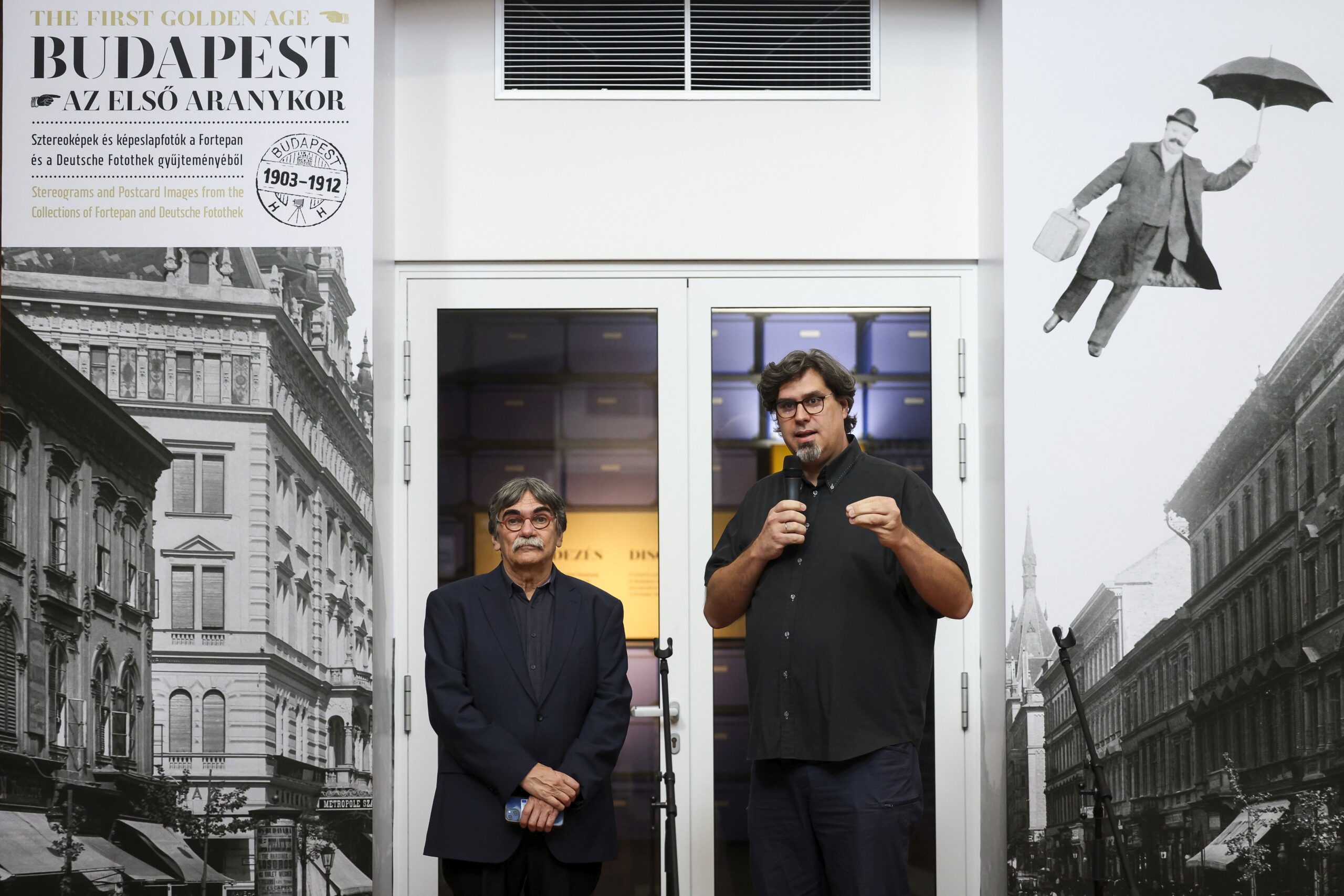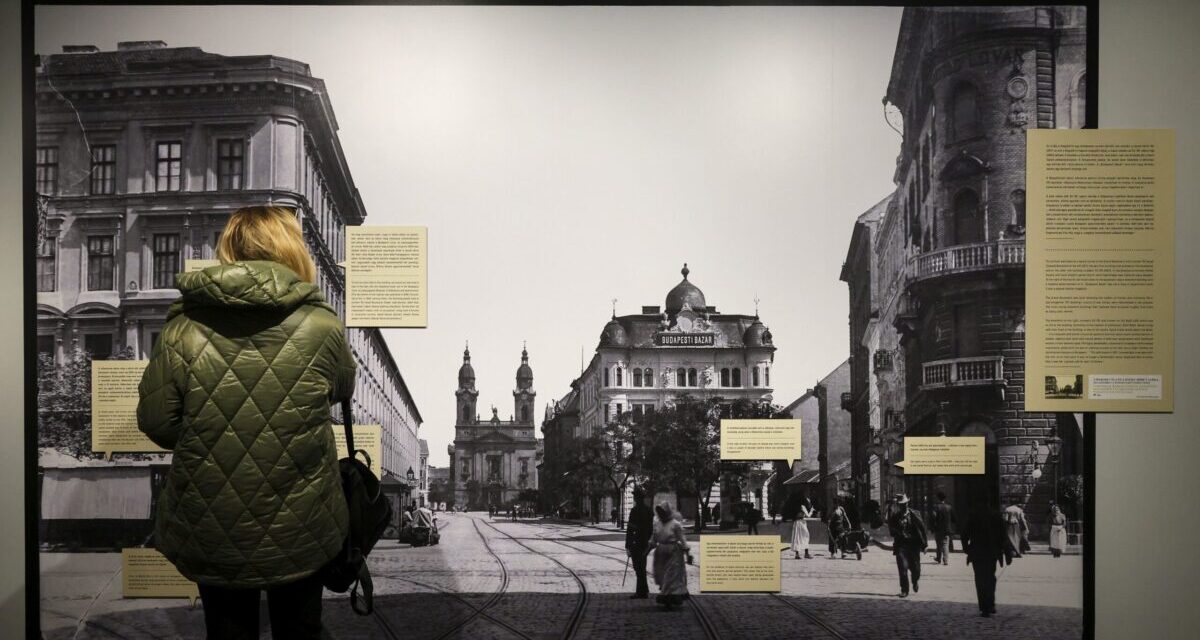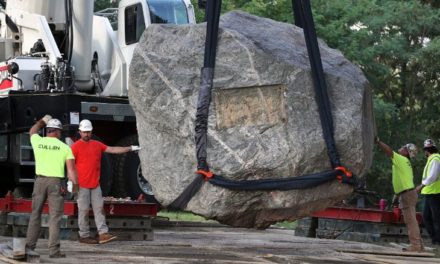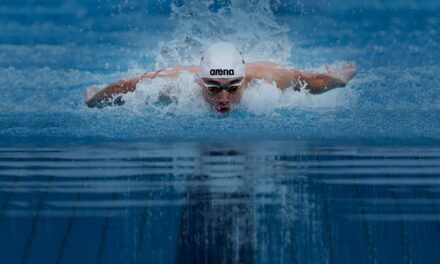In the collection of the Deutsche Fotothek in Dresden, the Fortepan team came across negatives of Budapest city photos by a German postcard maker, Brück & Sons, previously unknown in Hungary, which can now be viewed by the Hungarian public.
It is very exciting, very multi-layered, both playful and informative, and at the same time very spectacular - László Baán, the director general of the museum, said about the exhibition organized on the occasion of the 150th anniversary of the unification of the capital, during the press tour of the exhibition on Monday. The exhibition is Budapest. The first golden age – Stereo images and postcard photos from the collections of Fortepan and Deutsche Fotothek will be on display at the National Gallery.
The photo selection recalls the period of the capital, when Budapest lived its true heyday as one of the most dynamically developing cities in the world at the turn of the 19th and 20th centuries.
"If we consider the golden age as a stage of development in which the creative forces of a given community unite, then we can safely call this half century a real golden age," he pointed out, adding that at the time of the unification, Budapest was only considered the 30th largest city in Europe, the however, by the turn of the century, it was already listed in eighth place.
"After Paris, Vienna, Berlin, St. Petersburg, a city with such fantastic public institutions has been created, which still defines the image of the city, and of which every Hungarian is still proud," he pointed out.
István Virágvölgyi, the curator of the exhibition, said: the Fortepan team came across negatives of Budapest city photos by a German postcard company, Brück & Sons, previously unknown in Hungary, in the collection of the Deutsche Fotothek in Dresden, and the exhibition presents an exciting selection from this photographic material. The postcard photos are complemented by the shots of Frigyes Schoch, the affluent entrepreneur and hobby photographer from Budapest, who immortalized the capital city in unique three-dimensional photographs.
Jens Bove, director of the Deutsche Fotothek, said: Brück & Sons' pictures are also part of the Deutsche Fotothek's photo collection, which contains around seven million pictures.
As he said, the family recognized the potential of postcards in the early 1900s, and within a few years they reached the international level: between 1900 and 1918, they created around twenty thousand so-called motifs, which were sold in the order of millions. Among these motif images depicting iconic locations, 500 were taken from Budapest, and this selection forms the main material of the exhibition.
István Virágvölgyi recalled that the Brück family ran the Brück & Sohn company for seven generations until March 2019, for 226 years. The Brück family sold the photographic material belonging to the company's postcards from Budapest to the Deutsche Fotothek archive in Dresden. These digitized images will also be available in the Fortepan photo archive after the opening of the exhibition, he pointed out.
At the exhibition, for the first time, the public can see the company's Budapest city photos taken between 1903 and 1912, in which, in addition to the emblematic buildings, small street stories often come to life. This part of the presentation gives an idea of the development that Budapest went through at the beginning of the 20th century. The postcards depicting the capital were already known before, but thanks to the recently found German negative material, they were also accompanied by large, detailed enlargements. In this unit, you can basically see photo enlargements of locations that have not changed much in the last 120 years, said the curator.
The second unit of the exhibition presents the Brück & Sohn publishing house and the history of the development of postcards, as well as the hundreds of postcards published by the publishing house from Budapest in a large installation.
In this section, the audience can also get to know the technical background of making postcards, for example, the way of retouching, how people who were not in the original photos got on the postcards, or how the black and white images were subsequently colored. The organizers of the exhibition also included moving images in the exhibition that can be linked to certain locations shown in the postcard photos, so thanks to the videos, the Hungarian capital at the beginning of the century comes to life.
The other part of the exhibition consists of the three-dimensional stereo images of Frigyes Schoch, a Swiss construction contractor and hobby photographer from Budapest, in which Budapest, which has become a cosmopolitan city, unfolds from a private point of view.
Some of the buildings and locations shown in the photos from the time have now been significantly transformed or, in many cases, were destroyed during the Second World War. Therefore, in addition to contemporary recordings, the exhibition also presents the later fate or the present day image of the depicted locations, said István Virágvölgyi.

Budapest, November 13, 2023.
István Virágvölgyi, the curator of the exhibition, gives a speech at the press tour of the exhibition titled The First Golden Age - Stereoscopic and postcard photos from the collections of Fortepan and Deutsche Fotothek at the Hungarian National Gallery on November 13, 2023.
Next to him is co-curator András Török. The exhibition can be viewed from November 15 to February 18, 2024. MTI/Robert Hegedüs
The Swiss-born Frigyes Schoch and his partners built railways, residential and public buildings mainly in the South and Transylvania.
Around 1900, the man bought a stereo camera, with which he took many special pictures of life, panoramas and photo series from Transylvania, Budapest and the snowy mountain peaks of Austria to the Adriatic.
The Schoch legacy, the largest in Hungarian photographic history, containing 670 pieces, preserving the last three-dimensional moments of the Austro-Hungarian Monarchy, was donated by the descendants to the Historical Photo Gallery of the Hungarian National Museum through Fortepan. The section presenting stereo images can be viewed in a large-scale installation that recalls the former cinema-like stereo viewer called Universum World Panorama.
In addition to the contemporary stereo camera and viewer, visitors can also learn about the principle of stereo vision and photography, as well as view a selection of family photos that were taken in front of Schoch's apartment on Váci Street in the circular corridor.
The last section of the exhibition, complemented by today's pictures, shows how much and in what way Budapest has changed in the 100 years following its first golden age.
The exhibition can be visited from November 15 to February 18.
MTI













